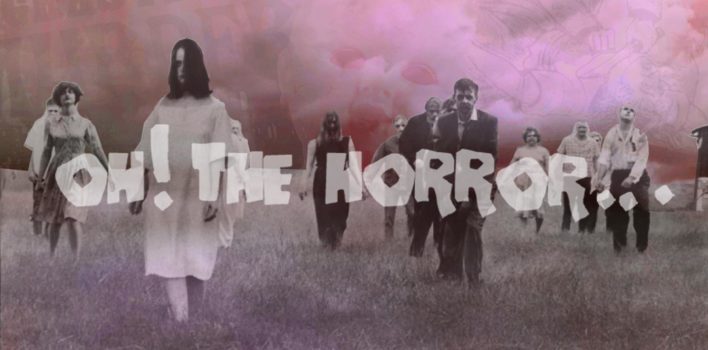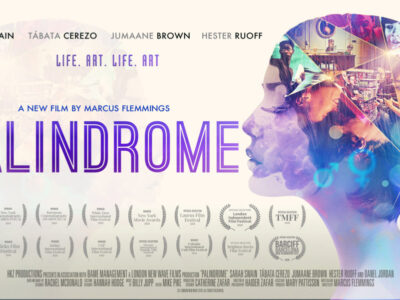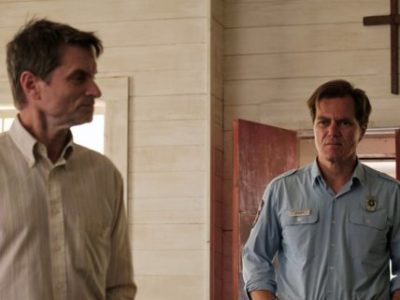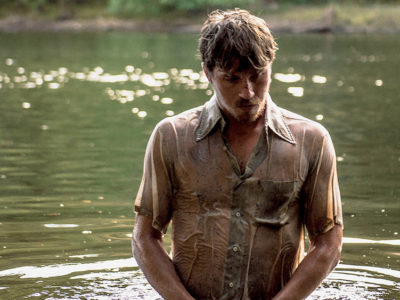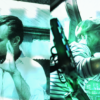Oh! The Horror… | of Double Features, Vol. II
I am so pleased this week to be collaborating, once again, with my good friend, Joseph Nooft, who is a contributor for Mockingbird. We wanted to bring to you some more suggestions for double features—a non-horror film paired with a horror film—that will introduce you to good horror if you are not a fan of horror and will give fans of horror a new lens in which to view some of their favorite genre films. We hope you enjoy these pairings!
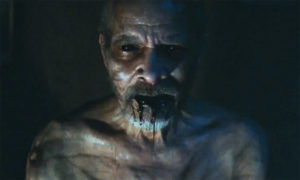 If You Liked Dunkirk (2017), You Might Like It Comes At Night (2017) – Joseph Nooft
If You Liked Dunkirk (2017), You Might Like It Comes At Night (2017) – Joseph Nooft
Stylistically, Dunkirk is cacophonous and profound. Fierce even, while It Comes At Night is a bit understated and slow paced. However, both offer a fresh take on their respective genres. We’ve all seen war movies, but we’ve never seen a war movie quite like Dunkirk. Following three separate storylines, Dunkirk pieces together its moving parts to canvas how 300,000 ally soldiers were unconventionally rescued from Nazis on the shores of France. It’s certainly an obscure and less heroic war tale than the Normandy, Midway, Pearl Harbor, etc. battle flicks that we’ve grown accustomed to seeing. And while it is inferred, Nolan, not even once, shows his audience the face of a Nazi enemy. Perhaps Dunkirk’s focus on retreat rather than attack is why its move to film was so drawn out.
The epidemic horror subgenre is certainly nothing new to the modern moviegoer, but director Trey Edward Schults’ sophomore feature, It Comes At Night, trims away much of the excess fat that we are used to gorging on in the atypical zombified cine-verse. The film finds a family of three posted up in a cabin in the woods. in attempt to shield themselves from a disease which threatens to wipe out mankind. When they discover an intruder in their house, at night of course, they hesitantly agree to take him, along with his wife and young child, into their commune. The jump scares are scarce. The camerawork is fluid, and the photography is gorgeous, but daunting; cloaked in twilight’s shadows. Schults gives the audience only what he gives his characters. His characters do not know, nor have they seen what may be the origin of the disease, so neither do we. This is undoubtedly the two film’s greatest shared trait: the feature of a faceless monster. Indeed a unique, yet strategic decision from each director.
Neither director overcompensates their work with excess dialogue. Throughout Dunkirk we can barely make out what its characters are even saying. An intentional move to mimic the chaos of war. It Comes At Night leans heavily on it’s characters expressions and movements to convey their feelings. We can see Travis’ (Kevin Harrison Jr.) sexual tension build when the intruder’s wife comes to live with his family. It’s apparent that the reality of lifelong loneliness is becoming his reality, even though he never utters a word on the subject. In the absence of a physical monster, we watch the film’s characters sense of connection dissolve as it became apparent that even their newfound community cannot spare them from the snares of this disease, of death. In Dunkirk the muffled dialogue yields to a silent fear and apathy that is contrasted by Hans Zimmer’s shrieking score. Paired with the faceless depiction of the Nazi military, the audience is manipulated to void any potential empathy towards the protagonists. Within that void there is a tighter bond that is established between those striving for good. There’s a revelation in the absence of battle that forms a communal love on the path for survival.
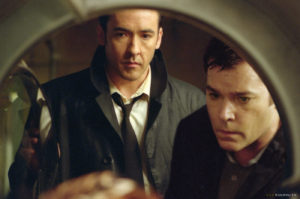 If You Liked The Breakfast Club (1985), You Might Like Identity (2003) – Blake Collier
If You Liked The Breakfast Club (1985), You Might Like Identity (2003) – Blake Collier
One of Hollywood’s favorite tropes is placing a handful of characters in a singular setting and letting their personalities, biases, prejudices, class, race and/or socio-economic statuses battle it out for supremacy and/or find common ground in their humanity. Either way, there is something cathartic about this narrative. At its very base, it’s a narrative that deals with community and how people operate when brought together under circumstances outside of their control. It is a microcosm of our existence together.
Probably the most iconic 80s director was John Hughes and, arguably, his most iconic 80s film was The Breakfast Club. A group of suburban teens find themselves stuck at their high school on a Saturday morning for detention. They each represent a angsty teen film trope: the jock, the cheerleader, the whiz kid, the outcast, the bad boy, etc. As the story goes along, we find them confessing to each other and coming to see how each has an inherent value and recognizing that there is a shared humanity underneath the constructed identities they embody.
Identity plays into the same idea as a random group of strangers find themselves stuck at a roadside motel during a furious storm that has flooded the roads in every direction. This collection of people do not know each other and there is reason enough to think that each has skeletons in their closet. Once characters start dying at the motel, we start to see their constructed identities fall apart and their true selves start to be revealed. Who is the killer? Who is the wolf in sheep’s clothing? The revelation at the end is potentially one of the most satisfying endings since The Twilight Zone.
Identity finds its exploration of identity through slasher tropes and parallel narratives that end in a violent psychological collision while The Breakfast Club found its catharsis through confession and common grace. Both films, however, end with a revelation about the true nature of the identities that we construct and what happens to them when others are invited in to our private spaces.
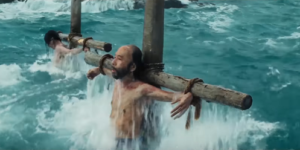 If You Liked Silence (2016), You Might Like The Witch (2015) – Joseph Nooft
If You Liked Silence (2016), You Might Like The Witch (2015) – Joseph Nooft
In Robert Eggers’ debut, feature length film The Witch a family is excommunicated from their Puritan community, condemned under the predisposition that someone in the family had dabbled with witchcraft. In the opening scene, William, the family’s patriarch, pleads his case to the presiding judge: “What went we out into this wilderness to find? Leaving our country, kindred, our fathers houses? We have travailed a vast ocean. For what? For what…Was it not for the pure and faithful dispensation of the Gospels, and the Kingdom of God?” His questions personify a Gospel centric stance in dispute with the starch legalism of the Puritan law. Though, there is no sympathy, no grace for William and his family. They are banished, sent to wander the unknown alone. Early on in The Witch there is a faint sense of hope. The early implications of the film is that the family has chosen a righteous route. Perhaps their stand might allot them a new prosperity. From a Christian perspective, this is where the grace of the Gospel absolves the stiffness of the law. However, new prosperity is not in the cards for William and kin. Their lives only become more tumultuous. While The Witch is damn-near hopeless, it finds a faint footing in the inherent battle between the egocentric direction of a man’s heart and the abasement of confession. Underneath the sheets of satanic witchcraft, there seems to be an admonition against the empowerment of self and the admittance that even with said admonition there is no guarantee for well-being.
Martin Scorsese’s adaptation of Shüsaku Endō’s novel, Silence, explores a similar forewarning. Set in the 17th century, the same time period as The Witch, Silence follows two Jesuit priests on their quest to retrieve an apostate brother who had gone rogue while on mission in Japan. Japan, historically, has fostered an atheistic culture. Missionaries were viewed as a threat to their deeply traditional lifestyle. For a priest to venture into the country meant death. In the film’s first act, Father Rodrigues (Andrew Garfield) and Father Garupe’s (Adam Driver) attempt to rescue their fallen brother not only seems reckless, but also a bit arrogant. It’s as if their faith could accomplish what Father Ferreira’s (Liam Neeson) could not. Yet, they are very faithful, pursuing their mission through each obstacle that they encounter. Silence’s pacing is so painstakingly slow that it coerces its viewer into empathetically sharing its leads’ suffering. Every blow that Father Garupe and Rodrigues absorb is felt wholeheartedly. Any sort of progress that the priests make instantly deteriorates within newfound persecution. Here our two priests encounter the same sobering reality that William and his family run into in The Witch: their faith-based pilgrimages are automatous, dependent on themselves, and thus futile. Perhaps the underlying question that each film asks its audience is, what follows the collapse of self? Is their, light or only darkness?
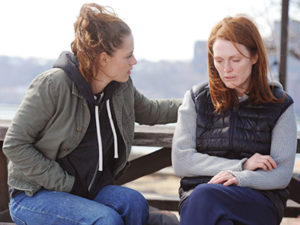 If You Liked Still Alice (2014), You Might Like Pontypool (2008) – Blake Collier
If You Liked Still Alice (2014), You Might Like Pontypool (2008) – Blake Collier
Alzheimer’s disease is a horror of a disease on its own. Lisa Genova’s book about a linguistics professor who is diagnosed with familial early onset Alzheimer’s was adapted for the screen with one of the great female actresses of my time, Julianne Moore, playing the titular character. We see a quick progression of mental decay as Alice Howland descends into the eventual void of lost memories and lost identity. One thing after another is taken cruelly from her as the film moves on and we end on a picture of Alice that is just barely able to mutter words. The very thing she devoted her life of study to is the final thing that is taken from her.
The nature of Alzheimer’s is such that communication becomes impeded. Not to mention memories, physical decay and the inability to recognize family and friends. Words becomes disconnected from meaning and definition. Words are disconnected from the logic of phonetics and literal construction. They are things not to be understood by the mind of one with this disease.
Pontypool comes at this breakdown of language from another disease that is a staple of horror cinema: a type of zombie. It’s a disease that affects language and disconnects words from their meaning. Victims start to speak gibberish and eventually focus in on a word or phrase which they start to repeat over and over. They keep saying it and saying it until it loses meaning—kind of like staring at a word long enough to convince oneself that it is spelled incorrectly—and eventually they become frustrated and enraged. They become displaced from themselves.
The events that take place in the radio station with Grant Mazzy and crew become an intriguing parallel to how Alzheimer’s decimates language, memories and the body and separates people from who they are and, often, from feeling like a human. These two films are an unlikely match, but there are some profound parallels that run through each of the films.


